Occupational safety training for operating wood panel pressing machines
99,000 ₫
Note: The above price is calculated per person and may vary depending on the number of trainees participating in the course and market fluctuations. For more accurate pricing support, please refer to the price list or contact our consulting staff directly.
Occupational safety is an important issue when operating wood panel pressing machines and needs to be addressed promptly to ensure the health and safety of workers and to enhance the reputation of enterprises here. The Occupational Safety Training is one of the effective solutions to raise awareness about preventing workplace accidents for workers operating wood panel pressing machines.
Table of Contents
Toggle1. Overview of the Wood Panel Pressing Machine
a. What is a Wood Panel Pressing Machine?
The wood panel pressing machine is a device used in the wood processing industry, especially in the production of plywood and other wood products. Its main function is to compress layers of wood panels or other wood materials together to create a more uniform and sturdy wood product.
Types of wood panel pressing machines:
- Hydraulic Press: Uses hydraulic oil pressure to compress layers of wood. This type is commonly used for products requiring high durability and quality.
- Pneumatic Press: Uses compressed air to apply pressure on wood layers. This machine generally operates faster and is suitable for products needing shorter production time.
- Heat Press: Combines pressure with high temperature to enhance bonding between wood layers. This type is often used in plywood and products that require tight adhesion.

b. Operating Principle of the Wood Panel Pressing Machine
Material Preparation
Before being placed into the machine, wood panels or wood materials are prepared according to technical and design specifications. This may include cutting, arranging, and cleaning the wood layers.
Loading Materials into the Machine
The wood layers are stacked in the desired order and size and placed into the machine’s mold or pressing chamber. For some presses, intermediate layers such as paper or plastic sheets may be added to improve bonding.
Applying Pressure and/or Temperature
- Pressure: Depending on the type of press, pressure can be generated using hydraulic oil (hydraulic press), compressed air (pneumatic press), or other mechanical methods. This pressure compresses the wood layers to create tight and uniform bonding.
- Temperature: In the case of heat presses, high temperature is applied along with pressure to soften adhesives or bonding materials. The heat makes adhesives pliable and easier to bond, resulting in stronger layers adhesion.
Pressing Time
The pressing process requires sufficient time to ensure the wood layers are compressed tightly and adhesives (if any) have enough time to cure. The pressing time varies depending on the machine type, wood type, and product requirements.
Cooling and Removal
After pressing, the machine reduces pressure and/or temperature, and the product is cooled if necessary. The product is then removed from the mold or pressing chamber.
Inspection and Finishing
The pressed product may need inspection to ensure quality and uniformity. If required, further processing such as cutting, sanding, or polishing can be done to finish the product.

c. Industries Using Wood Panel Pressing Machines
Wood Processing Industry
- Plywood Production: Wood panel presses are used to produce plywood from thin wood layers. Plywood is an important raw material in many construction and furniture applications.
- Manufacturing of Engineered Wood: Producing engineered wood products such as MDF (Medium-Density Fiberboard) and HDF (High-Density Fiberboard), commonly used in interiors and construction.
Furniture Manufacturing
- Furniture Production: Used for producing furniture items like cabinets, tables, chairs, shelves, and other products. Pressed wood panels usually offer high quality, durability, and uniformity.
- Wooden Door Production: Pressing wood layers together to create durable and sturdy wooden doors.
Construction Industry
- Production of Cover Boards and Floorboards: Used to produce various cover boards and floorboards applied in construction and repairs.
- Manufacturing Building Materials: Such as construction formwork panels, plywood, and engineered wood used in building works.
Automotive Industry
- Production of Wood Accessories: Some automotive interior parts, such as door panels and dashboards, can be made from pressed wood panels.
Toy and Household Goods Industry
- Wooden Toys: Wood panel presses are used to manufacture various parts and shapes for children’s wooden toys.
- Household Items: Production of household items like trays, wooden boxes, and decorative products.
Office Furniture Industry
- Office Desks and Chairs: Wood panel presses help produce office furniture with high quality and durability.
Decorative Wood Products Industry
- Interior Decorations: Also used to produce decorative wooden products such as wood paintings, photo frames, and other decorative items.
2. Overview of Safety Training for Operating Wood Panel Pressing Machines
a. What is Occupational Safety Training?
- Occupational safety training for operating wood panel pressing machines consists of sessions that raise awareness of accident prevention for workers. Those working directly with the pressing machines belong to Group 3.
- The safety training course helps workers recognize and avoid hazards, reducing risks of workplace accidents during their work.
REGISTER FOR OCCUPATIONAL SAFETY TRAINING SERVICE
b. Training Duration
Initial occupational safety training duration
- Total training time is at least 24 hours, including examination time.
- 8 hours of theory on policies and laws regarding occupational safety and hygiene.
- 8 hours of theory on basic knowledge of occupational safety and hygiene.
- 4 hours of theory on specialized training content.
- 2 hours of practical training on specialized content.
- 2 hours of theoretical examination at the end of the course.
The safety training center schedules multiple sessions depending on worker availability. Usually, there are 6 training sessions over 3 days, assuming the company can arrange continuous training time.
Periodic safety training duration
- Before the occupational safety card expires, workers who want to renew must undergo periodic occupational safety training, with the periodic training time at least 50% of the initial training duration.
Explanation: the total duration of periodic occupational safety training is at least 12 hours, including examination time. After completing the periodic training and passing the exam, workers will be reissued or have their occupational safety cards renewed.
c. Training Content
| No. | TRAINING CONTENT | TRAINING TIME (HOURS) | |||
| Total | Including | ||||
| Theory | Practice | Examination | |||
| I | Policies, laws on occupational safety and hygiene | 8 | 8 | 0 | 0 |
| 1 | Overview of legal documents on occupational safety and hygiene. | 6 | 6 | ||
| 2 | Standards and technical regulations on occupational safety and hygiene. | 1 | 1 | ||
| 3 | Specific regulations from state management agencies on occupational safety and hygiene when building, expanding or renovating factories, facilities for manufacturing, storing, preserving, inspecting machines, equipment, materials, and substances with strict occupational safety requirements. | 1 | 1 | ||
| II | Basic knowledge of occupational safety and hygiene | 8 | 8 | 0 | 0 |
| 1 | Basic knowledge about hazardous and harmful factors at the workplace. | 4 | 4 | ||
| 2 | Methods to improve working conditions. | 1 | 1 | ||
| 3 | Safety culture in production and business. | 1 | 1 | ||
| 4 | Rights and obligations of employers and workers; occupational safety and hygiene policies for workers; roles and duties of safety and hygiene networks. | 1 | 1 | ||
| 5 | Occupational safety and hygiene rules, safety signs, instructions, use of safety equipment and personal protective gear; first aid skills for workplace accidents and occupational disease prevention. | 1 | 1 | ||
| III | Specialized training content | 6 | 4 | 2 | 0 |
| Comprehensive knowledge of machines, equipment, hazardous substances; risk analysis, management, and safe working procedures with machines and substances requiring strict occupational safety. | 6 | 4 | 2 | ||
| IV | Final occupational safety training examination | 2 | 2 | 0 | 0 |
| Total | 24 | 22 | 2 | ||
See more training contents of the 6 groups
d. Occupational Safety Card
After completing the occupational safety training and passing the exam, workers will be issued an occupational safety card (commonly called a safety certificate for Group 3).
The Group 3 safety card clearly shows information such as name, date of birth, job and specific working environment. It also includes training duration, official stamp, and signature confirming course completion.
According to regulations on issuing safety cards as specified in Clause 2, Article 24 of Decree 44/2016/ND-CP, there are two cases:
- If there is a labor contract between the employer and employee, the employer must sign, stamp, and countersign the safety card for Group 3 workers after they complete training at an occupational safety training unit and pass the test.
- If the worker is freelance or seasonal and does not have a labor contract, the training unit must sign, stamp, and countersign the safety card after the worker completes the occupational safety training and passes the test.

3. Hazards for Workers Operating Wood Veneer Press Machines
Risk of Getting Trapped or Crushed
- Hazard: Parts of the press machine such as the pressing mold and pressure bars may cause trapping or crushing risks if workers are not careful. This can lead to broken arms, legs, or other body parts.
Risk of High Temperature
- Hazard: In heat press machines, contact with high temperatures can cause burns or skin damage to workers.
Risk of High Pressure
- Hazard: Press machines using high pressure may risk explosion or leakage if not properly maintained. High pressure can also cause injuries if an accident occurs.
Risk of Noise
- Hazard: Wood veneer press machines may produce loud noise during operation, which can damage workers’ hearing.
Risk from Wood Dust and Chemical Fumes
- Hazard: Operation of the press machine may generate wood dust and chemical fumes from glue or wood layers, posing respiratory hazards.
Risk of Electrical Hazards
- Hazard: Wood veneer press machines may use high electrical power, and risks of electric leakage or wiring damage can endanger workers.
Risk of Technical Failures and Malfunctions
- Hazard: Technical failures or machine breakdowns may lead to unexpected accidents or serious incidents.
Risk of Muscle Strain and Injuries
- Hazard: Jobs requiring heavy muscle force or improper posture may cause muscle strain and injuries.

4. Accident Control Measures When Operating Wood Veneer Press Machines
Training and Instruction
- Thorough training: Ensure all workers are trained on safe operation of wood veneer press machines, hazard identification, and proper use of personal protective equipment.
- Procedure guidance: Provide detailed manuals on operation, maintenance, and troubleshooting processes for workers.
Use of Safety Equipment
- Machine protection: Install protective devices such as covers, guards, and emergency stop systems to reduce contact risks with moving machine parts.
- Warning devices: Use sensors and indicator lights to alert when machines are operating or when faults occur.
Regular Maintenance and Inspection
- Regular maintenance: Perform scheduled maintenance on machines, inspecting key components such as hydraulic, pneumatic, and electrical systems.
- Pre-shift checks: Inspect machines before each work shift to detect early issues or malfunctions.
Establish Safe Work Procedures
- Operating procedures: Develop safe operating procedures including preparation, operation, and shutdown steps for the press machine.
- Emergency response plans: Ensure emergency plans are in place and workers are trained to handle incidents.
Use of Personal Protective Equipment (PPE)
- Personal protection: Provide PPE such as gloves, safety glasses, earplugs, and dust masks to workers.
- Comfort assurance: Ensure PPE fits well and is comfortable so workers can wear them continuously without difficulty.
Work Environment Management
- Ventilation and dust extraction: Install ventilation and dust extraction systems to reduce wood dust and chemical fumes in the air.
- Maintain cleanliness: Keep the work environment clean and organized to reduce slipping risks and accidents.
Monitoring and Risk Assessment
- Risk assessment: Conduct regular risk assessments to identify new hazards and adjust control measures if necessary.
- Continuous monitoring: Monitor machinery and worker activities to detect early signs of faults or unsafe behavior.
Process and Technology Improvement
- Technology upgrades: Invest in new technologies and machine improvements to enhance efficiency and reduce risks.
- Process optimization: Review and improve work processes to maximize safety and effectiveness.
Encouraging a Safety Culture
- Incident reporting encouragement: Encourage workers to report incidents, near misses, and unsafe conditions for timely corrective actions.
- Creating a safe environment: Build a workplace where safety is a top priority and everyone is responsible for their own and colleagues’ safety.
5. Benefits of Occupational Safety Training
An Toan Nam Viet offers your business the following great benefits upon completion of occupational safety training courses according to the Decree 44/2016/ND-CP on occupational safety and hygiene work for companies, factories, and enterprises.
- Workers can recognize potential occupational accident hazards and take preventive measures to avoid accidents.
- Your business can establish risk prevention measures in production, operation, and maintenance processes.
- Reduce costs related to safety incidents in the workplace.
- Uninterrupted production processes help increase labor productivity and product quality.
- Comply with labor safety laws and avoid legal risks.
- Create credibility and professionalism in all aspects, thereby enhancing your brand reputation.
Nam Việt’s training courses are solutions to prevent and combat external risk factors affecting individuals, helping them avoid dangers that could lead to injury or worse, death.
REGISTER FOR OCCUPATIONAL SAFETY TRAINING SERVICES
6. Customer Feedback After Completing the Training Course
An Toan Nam Viet has many years of experience accompanying various enterprises across Vietnam in general and southern provinces in particular. This responsibility is very precious to Nam Viet, so the Occupational Safety Training service is increasingly professional. The motivation for An Toan Nam Viet’s growth comes from positive feedback and suggestions from businesses. Below are testimonials from partners we have served.
Bac Nam E&C Investment and Construction Joint Stock Company
“The first time using An Toan Nam Viet’s service, I was surprised by the enthusiastic 24/7 support from the consulting team. The class organization was quick and convenient for our company. Thanks very much for Nam Việt’s service!”
Hoa Dat Construction and Trading Joint Stock Company
“Nam Việt’s service helped us a lot in simplifying occupational safety and completing safety documentation for work processes. The consulting team is enthusiastic and timely in answering our questions. 5 stars for Nam Việt.”
See more customer interviews after using An Toan Nam Viet’s services
7. Occupational Safety Training Capacity of An Toan Nam Viet
An Toan Nam Viet is a reputable and quality occupational safety training center in Vietnam today. Training sessions are held continuously at factories, production workshops, and construction sites nationwide (all 63 provinces of Vietnam).
REGISTER FOR OCCUPATIONAL SAFETY TRAINING SERVICES
Occupational Safety Training License
- An Toan Nam Viet has been inspected and certified by the Safety Department of the Ministry of Labor, War Invalids and Social Affairs as qualified to conduct occupational safety and hygiene training. This further strengthens our training capabilities.

Training Materials and Lectures
- Before being used in occupational safety training courses, materials are reviewed and approved to ensure accuracy and effectiveness.
- Teaching methods are standardized according to An Toan Nam Viet‘s standards, developed by experts in occupational safety and hygiene training to maximize learning outcomes.
Facilities
- Controlling factors in the training room environment improves teaching efficiency and learners’ knowledge absorption.
- Our training facilities always feature spacious rooms meeting standards for area, lighting, and training equipment.
8. Nationwide Reputable Quality Safety Training Center
At An Toan Nam Viet, we prioritize occupational safety training as a professional passion. For us, imparting self-protection knowledge to workers is a vital contribution to the nation.
To ensure effective training, we prepare carefully and meticulously, from tools, teaching devices to curricula, materials, audio, and lighting.
Our trainers are experts with many years of experience, including research on hazard identification across industries and prevention methods.
Lectures are practical, vivid, and easy to understand for workers. These factors help learners stay comfortable during study and absorb knowledge well. The content always aligns with Decree 44/2016/ND-CP.
Thus, workers learn many hazard prevention measures and how to apply them appropriately in real work.
Our training center proudly provides reputable, professional occupational safety training services with these advantages:
- Competitive training costs while ensuring quality.
- Flexible training schedules adapted to company production.
- Quick, legally compliant certification procedures.
- Experienced trainers with many years in the field.
- Training rooms with controlled factors that enhance teaching efficiency and knowledge absorption.
- Courses tailored to enterprise occupational safety work.
- Dedicated and professional service to support customers accurately and promptly.

9. Additional Occupational Safety Training Materials
- Occupational safety materials for operating wood veneer press machines
- Occupational safety training materials collection
- Occupational safety training test sets
- Occupational safety training slides for operating wood veneer press machines
- Occupational safety multiple-choice test for operating wood veneer press machines
No comments yet

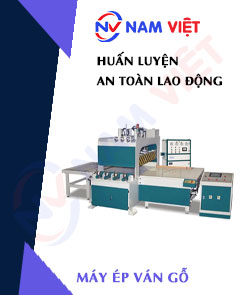
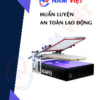
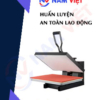






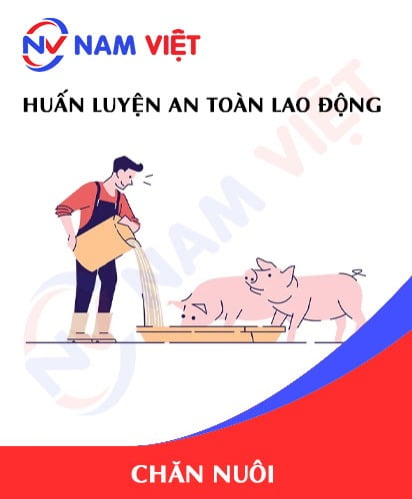



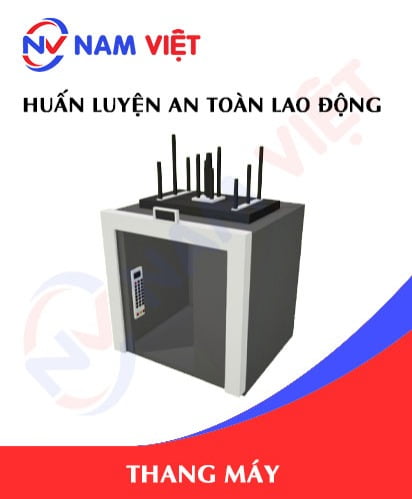
Review Occupational safety training for operating wood panel pressing machines
There are no reviews yet.